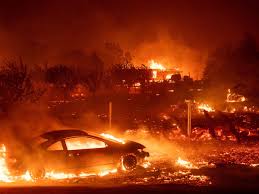The Impact of the Paradise California Fire: An Ongoing Crisis

Introduction
The Paradise California fire, known as the Camp Fire, occurred in 2018, resulting in catastrophic destruction and loss of life. This event not only altered the landscape of Paradise but also served as a crucial turning point in discussions around wildfire preparedness, climate change, and community resilience. With wildfires becoming increasingly frequent and severe, understanding the implications of the Paradise fire remains relevant for residents and policymakers alike.
The Camp Fire of 2018
On November 8, 2018, the Camp Fire ignited in Butte County, California, rapidly spreading due to dry conditions and high winds. It became the deadliest and most destructive wildfire in California’s history, claiming 85 lives and destroying over 18,000 structures, primarily homes. The fire’s rapid spread prompted mass evacuations and left thousands homeless. In addition to the immediate devastation, the fire had long-term effects on air quality, public health, and the local economy.
Current Situation and Recovery Efforts
As of 2023, the community of Paradise is still recovering from the aftermath of the fire. Rebuilding efforts are ongoing, with state and federal aid supporting reconstruction projects. Many residents have returned to rebuild their homes, but challenges persist, such as navigating insurance claims and addressing the emotional and psychological impact of trauma. Local leaders continue to advocate for more robust wildfire prevention measures, including improved land management and enhanced emergency response systems.
Long-Term Implications
The Paradise fire serves as a potent reminder of the growing threat posed by wildfires exacerbated by climate change. It has spurred a broader conversation about sustainable land use and fire preparedness. Experts predict that similar events may become more common if climate trends continue unchecked. For individuals and communities, this highlights the importance of preparedness, community cohesion, and environmental stewardship.
Conclusion
The legacy of the Paradise California fire extends beyond the immediate destruction. As a community rebuilds, the incident epitomizes the urgent need for comprehensive wildfire strategies and community resilience planning. For residents and policymakers, understanding the fire’s impact is critical in shaping a safer and more sustainable future.








